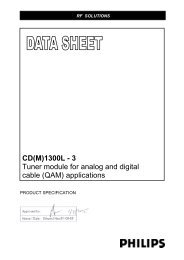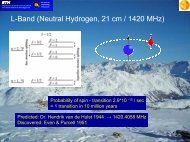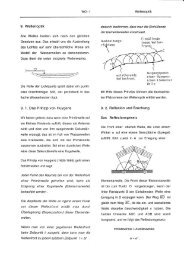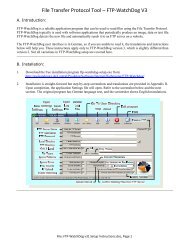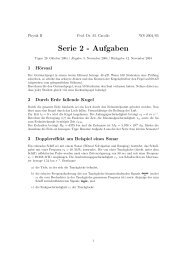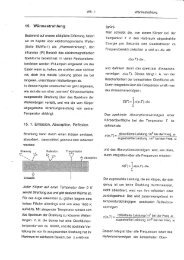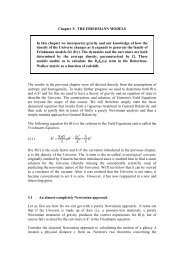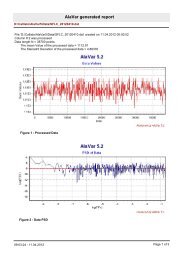here - Institute for Astronomy Umleitung
here - Institute for Astronomy Umleitung
here - Institute for Astronomy Umleitung
Create successful ePaper yourself
Turn your PDF publications into a flip-book with our unique Google optimized e-Paper software.
Title: Science Case<br />
Reference: MUSE-MEM-SCI-052<br />
Issue: 1.3<br />
Date: 04/02/2004<br />
Page: 48/100<br />
Fig. 2-25: Simulated MUSE deep field from GalIcs simulation. Galaxies are coloured<br />
according to their apparent redshift. Galaxies detected by their continuum (I AB < 26.7 )<br />
and/or by their Ly α emission (Flux > 3.9 10 -19 erg.s -1 .cm -2 ) are shown.<br />
For surveys, as opposed to studies of previously identified objects, the power of an integral<br />
field spectrograph relative to a multi-slit spectrograph observing previously identified (i.e.<br />
continuum-selected) objects, is to survey "blank fields". Especially <strong>for</strong> objects with strong<br />
emission lines, such as expected <strong>for</strong> young star-<strong>for</strong>ming galaxies, a survey <strong>for</strong> emission lines<br />
with an integral field spectrograph reaches to extremely faint continuum levels. An emission<br />
line galaxy with line flux 3.9×10 -19 erg s -1 cm -2 at 9200 Å and an equivalent width of 200 Å<br />
(as seen in a good fraction of emission line objects at this wavelength, from Hα at z ~ 0.4,<br />
[OII] 3727 at z ~ 1.4 and Lyman α at z ~ 6.5) has a continuum Z AB ~ 30.0, far below the point<br />
w<strong>here</strong> systematic spectroscopy of continuum-selected galaxies is feasible or attractive<br />
(because most such galaxies would not have detectable lines).<br />
Thus the integral field approach is most attractive (relative to the others) at faint levels and a<br />
MUSE survey should seek to survey down to the faintest possible levels, i.e. well below the<br />
current depth of narrow band surveys (~10 -17 erg s -1 cm -2 ). One consequence of this is that<br />
complementary data to the MUSE data cubes (e.g. imaging and photometry outside of the<br />
MUSE wavelength interval or very high resolution imaging within it) must be<br />
correspondingly deep (AB ~ 30 magnitude) if at all possible.




